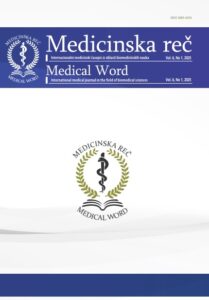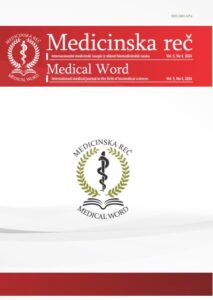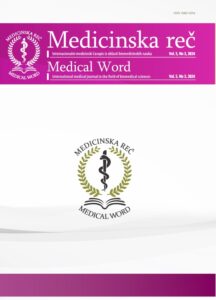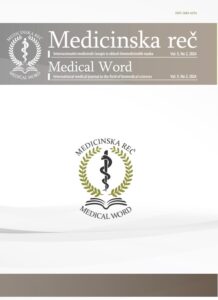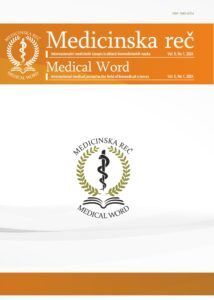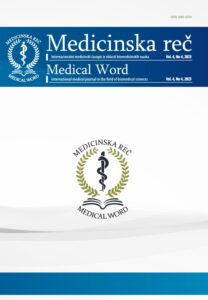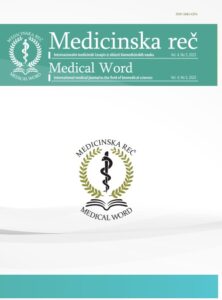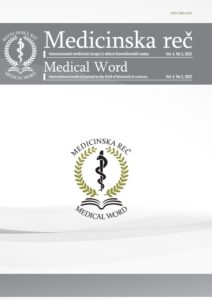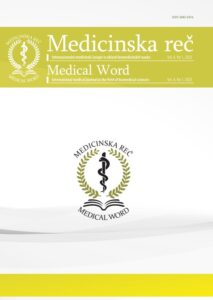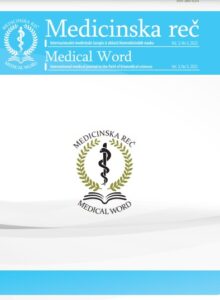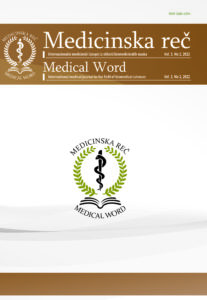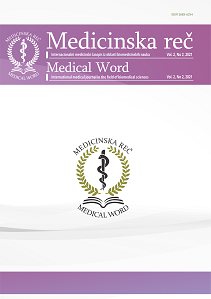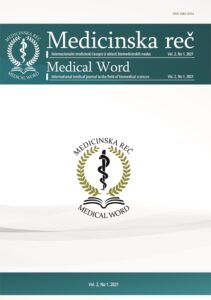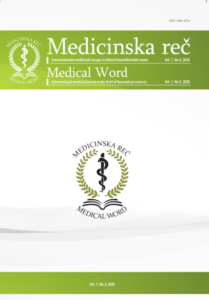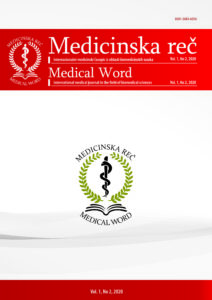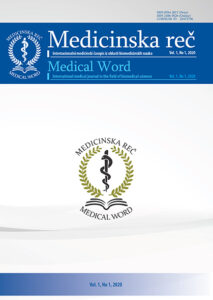Prevention of Contractures in the Treatment of Severe Burns in Children
Original article
Danijela Đerić, Aleksandar Marinković, Strahinja Konstantinović
105–110
https://doi.org/10.5937/medrec2304105D
Abstract
Burns represent the most severe and one of the most frequent injuries in the pediatric population. Treatment of burns involves complete epithelization of the burned region, rehabilitation of patients and prevention of post-operative and post-burn complications.
The aim of this work was to show the characteristics of burns, their frequency, percentage representation in relation to the depth of the burn, the frequency of occurrence of post-burn contractures in children and to point out possible measures to prevent them.
This retrospective study included a total of 167 children. The distribution of burned children according to age, etiological factors of burns, degree of burns, type of treatment, and frequency of contractures were analyzed.
There were 105 boys (63%) and 62 girls (37%). The majority of burns occurred in the age group of 2 to 5 years, with a total of 96 (57%), more significant compared to children under one year of age, 31 (19%) and children older than 5 years, 40 (24%). The highest percentage of burns was caused by hot liquids in 133 children (80%). There were a total of 102 second degree burns (61.07%), and 65 third degree burns (38.92%). Keloid scars, with consequent contractures, were verified in IIB and III degree burns in a total of 23 children (13.77%), namely in 15 (65.2%) children with III degree burns and in 8 (34.8%) children with IIB degree burns.
The largest number of burns are caused by hot liquids. Very often they can be the result of child abuse or neglect. The correct choice of treatment and prevention measures can reduce complications. The importance of preventing them and the importance of social support and work, both for children and parents of burned children, is very important.
Key words: burns, children, prevention, contractures
Literatura
- Strobel AM, Fey R. Emergency Care of Pediatric Burns. Emerg Med Clin North Am 2018 ; 36(2): 441–58.
- Greenhalgh DG. Management of Burns. N Engl J Med 2019; 380(24): 2349–59.
- Krstić Z i saradnici. Osnovi dečije hirurgije. Beograd: Beogradsko mašinsko-grafičko-preduzeće; 1993.
- Dupree MT, Boyer JD, Cobb MW. Marjolin’s ulcer arising in a burn scar. Cutis 1998; 62: 49–51.
- Tredget EE. Total Burn Care. Can J Surg 1996; 39 (5):434–5.
- Ring LM. Kids and hot liquids–a burning reality. J Pediatr Health Care 2007; 21(3): 192–4.
- Ruan J, Xi M, Xie W. Analysis of 12,661 pediatric burns in Wuhan institute of burns: A retrospective study of fifteen years. Burns 2021; 47(8): 1915–21.
- Libber SM, Stayton DJ. Childhood burns reconsidered: the child, the family, and the burn injury. J Trauma 1984; 24(3): 245–52.
- Rimmer RB, Weigand S, Foster KN, Wadsworth MM, Jacober K, Matthews MR, Drachman D, Caruso DM. Scald burns in young children–a review of Arizona burn center pediatric patients and a proposal for prevention in the Hispanic community. J Burn Care Res 2008; 29(4): 595–605.
- Kao CC, Garner WL. Acute burns. Plast Reconstr Surg 2000; 105: 2482–93.
- Fufa DT, Chuang SS, Yang JY. Postburn contractures of the hand. J Hand Surg Am. 2014; 39(9): 1869–76.
- Goverman J, Mathews K, Goldstein R, Holavanahalli R, Kowalske K, Esselman P, et al. Adult Contractures in Burn Injury: A Burn Model System National Database Study. J Burn Care Res 2017; 38(1): 328–36.
- Woolard A, Wickens N, McGivern L, de Gouveia Belinelo P, Martin L, Wood F, et al. “I just get scared it’s going to happen again”: a qualitative study of the psychosocial impact of pediatric burns from the child’s perspective. BMC Pediatr 2023; 23(1): 280–5.
- Woolard A, Bullman I, Allahham A, Long T, Milroy H, Wood F, et al. Resilience and posttraumatic growth after burn: a review of barriers, enablers, and interventions to improve psychological recovery. Eur Burn J 2022; 3(1): 89–121.
- Lernevall LST, Moi AL, Gjengedal E, Dreyer P. Parents’ lived experience of living with and caring for their burn-injured child in a home setting. Int J Qual Stud Health Well-being 2023; 18(1): 2216032.


